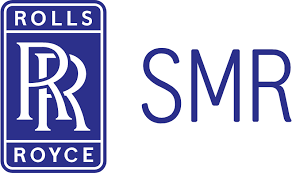Part 1 of 2 Parts
Executives at Rolls-Royce estimate that U.K. regulators will take four and a half years to assess the safety of its design for a small modular reactor (SMR). The U.K. company must endure more lengthy approval processes in other countries where it wants to build its SMRs.
Helena Perry is the Rolls-Royce’s regulatory director. She criticized the typical international approval process. She said, “It’s incredibly time-consuming.” She noted that, the company submitted its plans to the U.K. Office for Nuclear (ONR) Regulation two years ago.
Rolls-Royce is one of many developers and officials supporting a global drive to overhaul nuclear regulation amid concern the set-up is ill-suited to the nascent industry for small modular reactors (SMRs). SMRs have attracted huge interest as countries look to find new sources of low-carbon energy.
Since 2022 the International Atomic Energy Agency (IAEA) has led efforts to synchronize regulatory standards and processes. The first phase of their efforts is due to be completed this year. However, there are doubts over how much can be achieved, in view of the sensitive nature of the industry and embedded working practices.
Allison Macfarlane is former chair of the US Nuclear Regulatory Commission (NRC). She said, “Countries approach regulation differently, from a different starting philosophy. You can share information and try to align, but you are never going to have the same regulatory scheme everywhere.”
The push to overhaul regulation comes as the positive publicity around nuclear technology has been tempered by concerns over long development timeframes and some early setbacks. Nu-Scale cancelled what would have been the first SMR in the US last year because they could not find enough buyers signed up for its power. In addition, construction costs had risen sharply the previous year.
Macfarlane added, “From my analysis, the thing that’s holding them up is the economics, the supply chains. There’s lots of roadblocks.”
The International Energy Agency (IEA) estimates that nuclear power capacity will have to more than double by 2050 to meet global goals of net zero carbon emissions. Over twenty countries, including the U.S. and the U.A.E., agreed at the COP28 climate conference in November to work towards tripling global nuclear capacity.
SMRs are designed to be prefabricated. This means that large parts of SMRs are designed to be built in factories rather than onsite. This makes them easier to deploy, driving costs down as several smaller models are completed. That prospect has attracted politicians and investors looking to avoid the cost overruns and lengthy development times of large-scale nuclear power plants.
About sixty to seventy SMR designs are being developed, according to nuclear energy bodies. These range from those drawing on standard nuclear technology used by large-scale plants today, to more “advanced” reactors using lead or sodium as coolants.
Yet only three SMR developers have been awarded an operating license. The licenses have been issued in China, Russia and Japan. Supporters fear that current regulation could hinder the rollout of SMRs. Design approval for nuclear reactors usually takes several years because of the complexity of reactor designs and dangers of radioactive materials.
Please read Part 2 next

